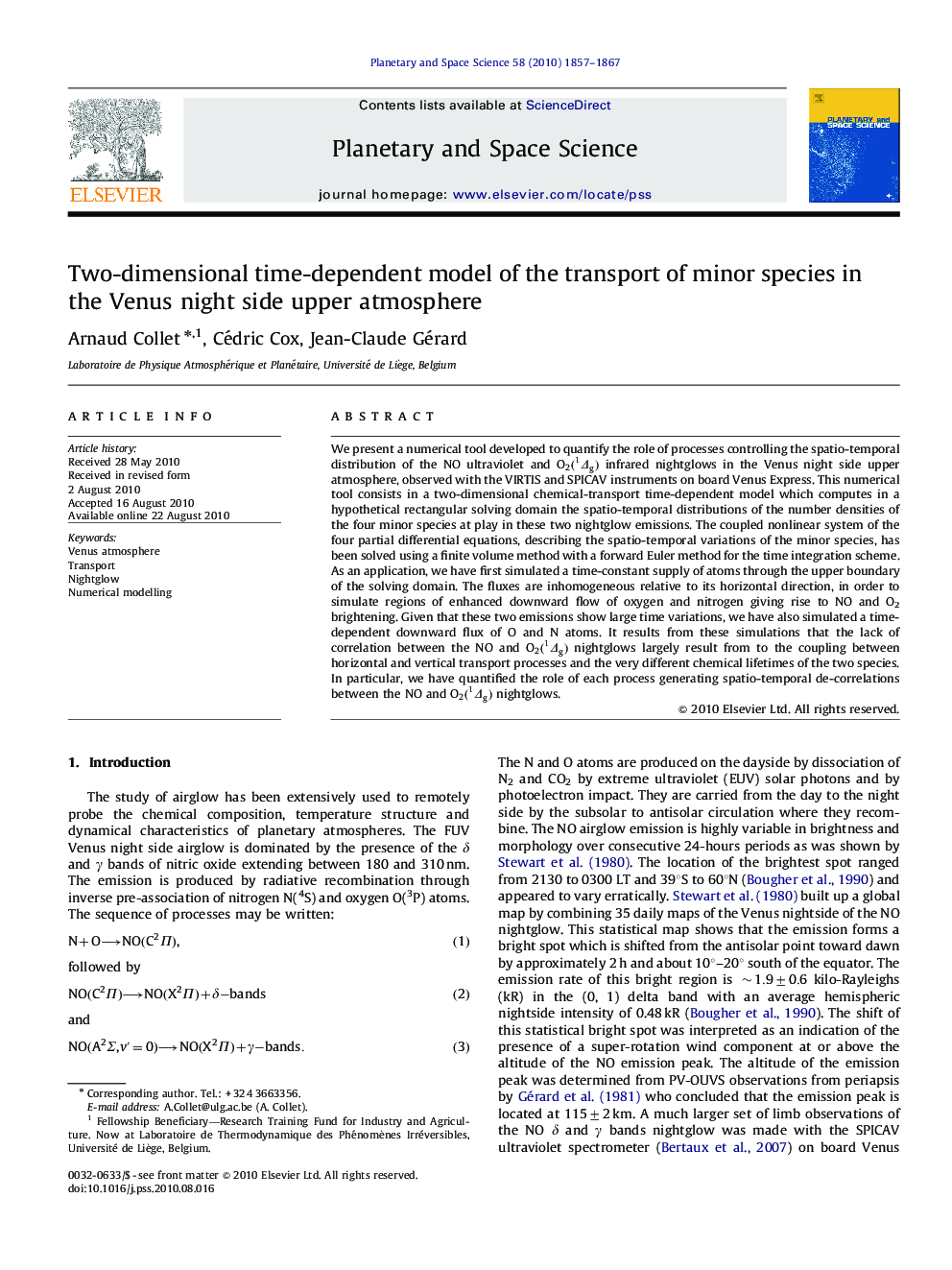| Article ID | Journal | Published Year | Pages | File Type |
|---|---|---|---|---|
| 1781647 | Planetary and Space Science | 2010 | 11 Pages |
We present a numerical tool developed to quantify the role of processes controlling the spatio-temporal distribution of the NO ultraviolet and O2(Δg1) infrared nightglows in the Venus night side upper atmosphere, observed with the VIRTIS and SPICAV instruments on board Venus Express. This numerical tool consists in a two-dimensional chemical-transport time-dependent model which computes in a hypothetical rectangular solving domain the spatio-temporal distributions of the number densities of the four minor species at play in these two nightglow emissions. The coupled nonlinear system of the four partial differential equations, describing the spatio-temporal variations of the minor species, has been solved using a finite volume method with a forward Euler method for the time integration scheme. As an application, we have first simulated a time-constant supply of atoms through the upper boundary of the solving domain. The fluxes are inhomogeneous relative to its horizontal direction, in order to simulate regions of enhanced downward flow of oxygen and nitrogen giving rise to NO and O2 brightening. Given that these two emissions show large time variations, we have also simulated a time-dependent downward flux of O and N atoms. It results from these simulations that the lack of correlation between the NO and O2(Δg1) nightglows largely result from to the coupling between horizontal and vertical transport processes and the very different chemical lifetimes of the two species. In particular, we have quantified the role of each process generating spatio-temporal de-correlations between the NO and O2(Δg1) nightglows.
